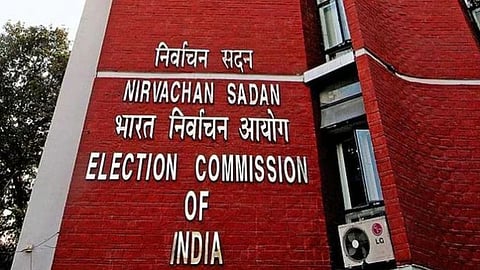
- Home
- Live Blog
- Breaking News
- Top Headlines
- Cities
- NE News
- Sentinel Media
- Sports
- Education
- Jobs

The proposal to hold simultaneous Lok Sabha and Assembly polls has gathered fresh momentum. The constitutional amendments that will be required to make appropriate changes in the legal-administrative framework will be the most challenging part of taking the proposal forward. The High-Level Committee (HLC) constituted by the government under the chairmanship of former President of India Ram Nath Kovind to examine the issue has so far received 20,972 responses, of which 81% affirmed the idea of simultaneous polls, according to an official release issued by the Press Information Bureau. The committee invited suggestions from citizens by January 15 and fixed its next meeting for January 27. Till date, the HLC has received representation from 17 of 56 political parties, from which it has invited suggestions. The HLC has already noted the suggestion of the Election Commission of India on the issue. Besides, the Chairman of the HLC on Simultaneous Elections, Ram Nath Kovind, has initiated consultations with eminent jurists, former Chief Justices of the Supreme Court and High Courts, former Chief Election Commissioners of India, heads of the Bar Council of India, FICCI, ASSOCHAM, and CII, according to the official release. These developments are indicative of the process being fast-tracked, triggering speculation in political circles that simultaneous polls might become a reality sooner than anticipated. According to reports, the Election Commission has estimated that Rs 10,000 crore would be required every 15 years to procure two sets of Electronic Voting Machines (EVMs) for each polling booth—one for Lok Sabha and another for assembly—if simultaneous polls are held. The Commission, however, reportedly informed the Law Commission that, due to the hurdles of producing the required number of EVMs, the first simultaneous polls can only be possible in 2029. There is the option of returning to printed ballots in smaller states until the production of all the required EVMs is achieved. Beyond logistical issues, it is a set of constitutional amendments that will be required to make the necessary changes in the legal framework. Most critical among these is the amendment to Article 172 related to the duration of state assemblies. The Article states: Every Legislative Assembly of every State, unless sooner dissolved, shall continue for five years from the date appointed for its first meeting and no longer, and the expiration of the said period of five years shall operate as a dissolution of the Assembly. Provided that the said period may, while a Proclamation of Emergency is in operation, be extended by Parliament by law for a period not exceeding one year at a time and not extending in any case beyond a period of six months after the Proclamation has ceased to operate. As elections to state assemblies are held in different years, some of these might be required to be dissolved ahead of the scheduled expiration of terms to facilitate simultaneous polls. Consensus on this is not going to be easy, particularly with the consent of opposition-ruled states. Other articles include Article 83 on the dissolution of the Houses of Parliament, Article 85 on the dissolution of the Lok Sabha by the President, and Article 356 relating to the imposition of the President’s Rule. The core principles on which the idea of simultaneous polls is based are: frequent elections cause disruptions to policy implementation due to the imposition of the Model Code of Conduct; rising expenditure in conducting elections due to the growing size of electorates can be reduced; and taxpayer’s money can be saved if elections to the Lok Sabha and state assemblies are held simultaneously. Besides, disruptions in education and the overwhelming opinion of citizens in favour of simultaneous polls will bolster the central government’s idea, which is expected to be firmed up by the recommendations of the HLC and the final report of the Law Commission. Any exercise in parliament to propose the required amendments will also set the narrative for future polls to be held simultaneously. There are critical legal issues, such as one candidate standing for both Lok Sabha and state assembly polls and getting elected to both houses. The requirement of vacating one will lead to the holding of fresh polls, which will negate the principle of simultaneous polls in the event that the number of such seats is large. It also brings into focus Anti-Defection laws and the question of whether these will also be required to be strengthened to prevent floor crossings once elections are held. In such a situation, will it lead to a situation where houses will have a fixed term and the party that forms government will continue in power, or will it lead to authoritarian rule with the tenure of government not determined by the number of elected representatives? These are some of the many critical questions that will need to be answered. All eyes are on the recommendations to be made by the HLC, which will be the next step towards simultaneous polls.